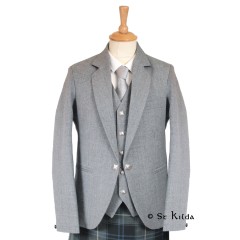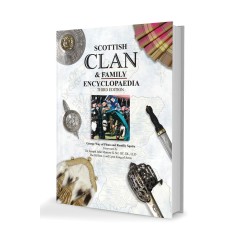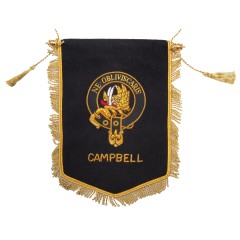-
Kilts
- Jackets
-
Sporrans
Dress Sporrans are the most formal and eye-catching type of civilian sporra..The trusty 'all-rounder': not as informal as the Day Sporran, not as formal..The Day Sporran is a trusty, durable everyday accessory for your Highlandwe..Here you'll find quality sporran accessories and spares. Spruce up your out..
-
Women
Whether you’re heading out for a brisk evening walk or attending a sophist..Crafted with meticulous attention to detail, our waistcoat will feature yo..St Kilda’s Tweed blazers and waistcoats are meticulously handcrafted in Sc..Looking for a practical bag that also celebrates your Scottish heritage? S..
-
Accessories
Here you will find buttons and swatches. We recommend swatches as the best..Here you will find the essential Hangers, Bags and Carriers for storing and..
-
Gifts
Celtic artists from Scotland and Ireland have left a legacy which has endu..
- Clan
-
Clearance
No waiting - all these hand-made sporrans are made up and ready to go. All ..
Crest Meaning: Charteris

Something of a pun here, albeit a slightly sinister one. The name Charteris is assumed to refer to Chartres in France and the family’s origins there. A charter was a type of medieval document, essential a detailed receipt for a transaction. Charters would be issued by kings and major nobles to give rights to land or other privileges. The symbolism here is therefore the dagger, force of arms, is the metaphorical charter of how the Charteris kindred claim their rights and prestige.

The dagger is probably a reference to William Charteris being present when Robert Bruce shockingly murdered John Comyn at Dumfries, a notorious event made even more shocking by being committed within a church and under a truce. However, this event was also seen as the starting point, the crossing of the Rubicon, for Bruce’s campaign to claim the throne of Scotland and secure independence against the English. The murder also referred to in the crests of the Kilpatricks and Flemings. All these crests turn the murder into a proud boast, of their unwavering support of the Bruce cause. This adds an additional layer to the symbolism: the prosperity of the Charteris, and the charters they held, all stemmed from that moment
Sir George MacKenzie’s 1690 Families of Scotland Manuscript mentions how Charteris of Kinfawns possessed an ancestral sword with the inscription ‘This is our Charter’, a very literal manifestation of the crest (which the crest is probably based on. What happened to this sword is unclear. The crest was not mentioned in Nisbet’s 1722 System of Heraldry. The crest in its modern form seems to emerge with Francis Charteris of Amisfield in the 1750s, when he changed an older crest of an arm issuing out of a cloud holding a sword (with motto ‘Non Gladio sed Gratia’) to the hand and dagger and ‘This is our Charter’ (R.R. Stoddart, Scottish Arms being a Collection of Armorial Bearings 1370-1678, p.70).
MKP 22 January 2021





















-240x240w.jpg)

















































